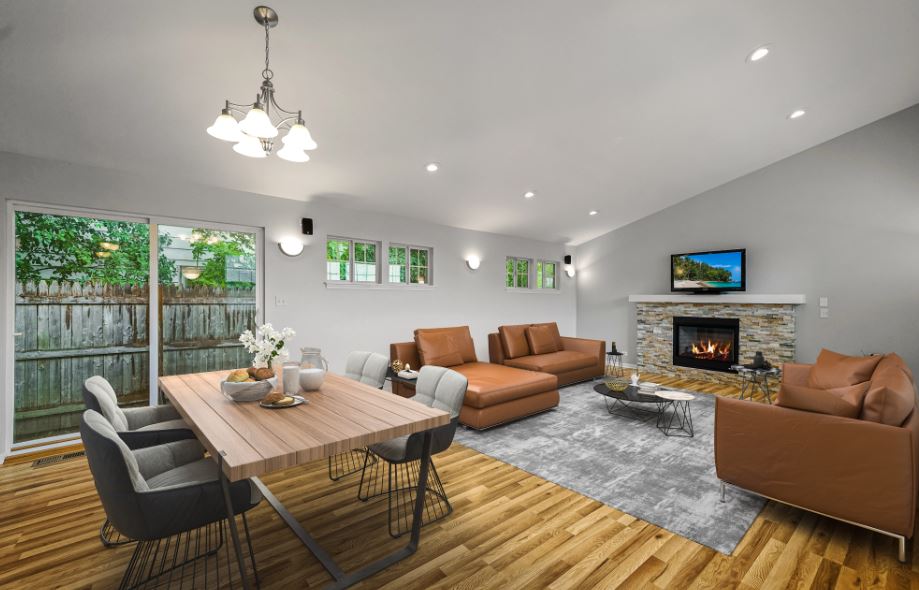1. What is 3D architectural visualization?
3D architectural visualization is the most recent development in architecture. It refers to the creation of three-dimensional models of a structure using computer software. Clients can walk around a 3D model and view it from any angle. Factors such as carpets, furniture, paintings, and lighting can also be added and their effects can be observed.
Today’s 3D models are very detailed and accurate. They contain realistic elements such as sunlight and shadow effects, making them look almost like photos.
2. Why is 3D architectural visualization important?
3D architectural visualization is probably the most effective way to convey ideas in architecture. They do not require additional physical materials, they are faster and also show more than traditional modeling methods. Here are five other key benefits of using 3D architectural visualization:
Easily explain your ideas to anyone
Explaining a detailed structure like a construction project to someone without prior knowledge of your field can be very tiring without the help of visual means. 3D rendering is an easy way to convey many details about a project easily.
Cost-Effective
You might think that a sophisticated technology like 3D architectural visualization is very expensive. And in the early days, it certainly was. However, it has become much more affordable over the years and is now within the budget of most homeowners. Even 3D animation, which can portray more to potential clients than just images, has a high cost-to-benefit ratio.
However, as 3D software is becoming increasingly accessible to everyone, it is not uncommon to come across freelance workers who provide their services at a reduced cost. Be cautious when considering cheaper services – the end product may be of much lower quality. Although you can save upfront money, you may have to settle for more expenses later, we will explain in a later section.
Easily detect errors early
It is all too common for project budgets to be exceeded due to changes made by clients while the structure is being built. This is because clients often do not have architectural training and have difficulty understanding certain ideas before the construction phase begins, especially if there are not enough drawings to convey specific ideas. be.
3D models give clients the opportunity to detect problems early. With a realistic visual tendency of their project, they can know whether they dislike the design and layout of something from the start. By capturing the problem in the early stages, they can avoid huge costs when making changes after construction has begun.
Use 3D models as a marketing tool
If you want to attract investors, creating a stunning image of your project is a great way to advertise yourself. Sketch drawings and blueprints, while informative, will not serve to promote your projects and ideas. It is better to hire a rendering company that can accurately convey your ideas through 3D visualization.
3. Future of 3D architectural visualization
The future of 3D architecture rendering is interesting. Rendering software is becoming more efficient and cost-effective each year. It requires fewer resources and less time to create high-quality models. Combined with reduced processing power costs, even realistic animations are accessible to new companies.
The efficiency of 3D architectural imagery increases allowing a more iterative design process. An architect can visualize a project, quickly render it, find places that need changes, and quickly make those changes to their model. Once these quick steps have taken place, architects can show the project to their clients. From that, clients can identify the changes they want and the changes will be done interactively.
Perhaps the most interesting possibility for 3D architecture imagery is the use of virtual reality (VR) technology. If graphics rendering is combined with VR, an architect can take their clients’ virtual tour of their designs. Thanks to that, it allows them to deeply experience the potential of the project.
Using VR can lead to faster approvals. It can also help clients be more confident to move on with their projects. The virtual experience allows clients to explore design, giving them greater peace of mind about funding an expensive project.

